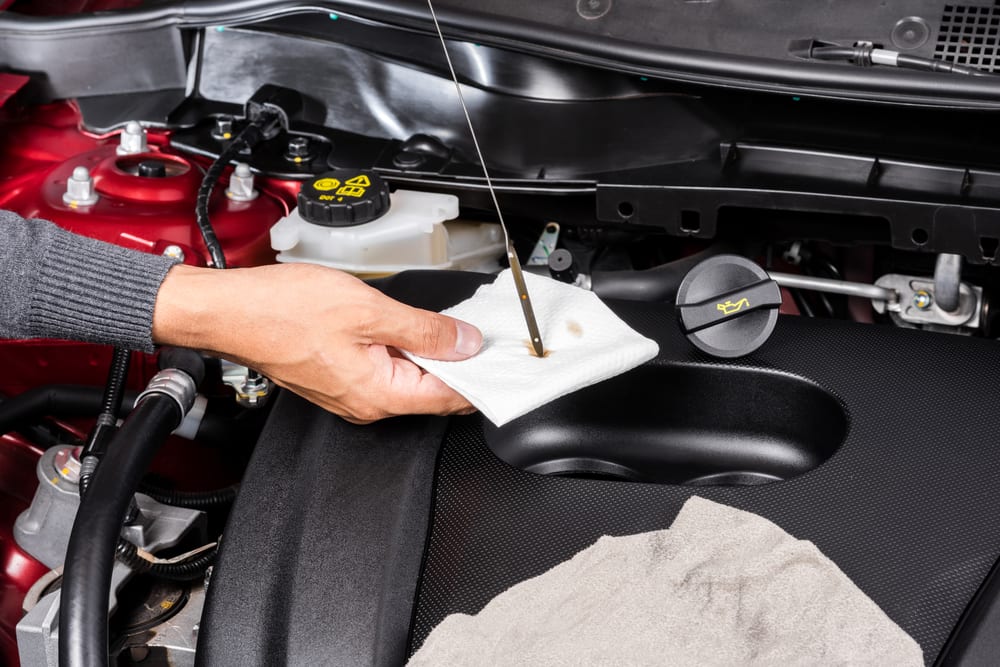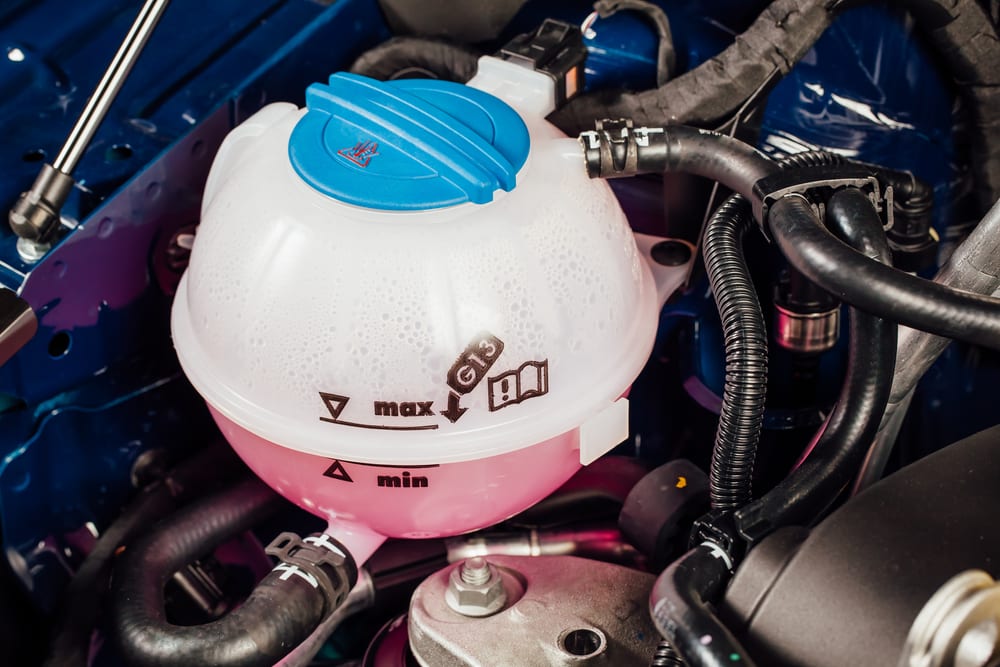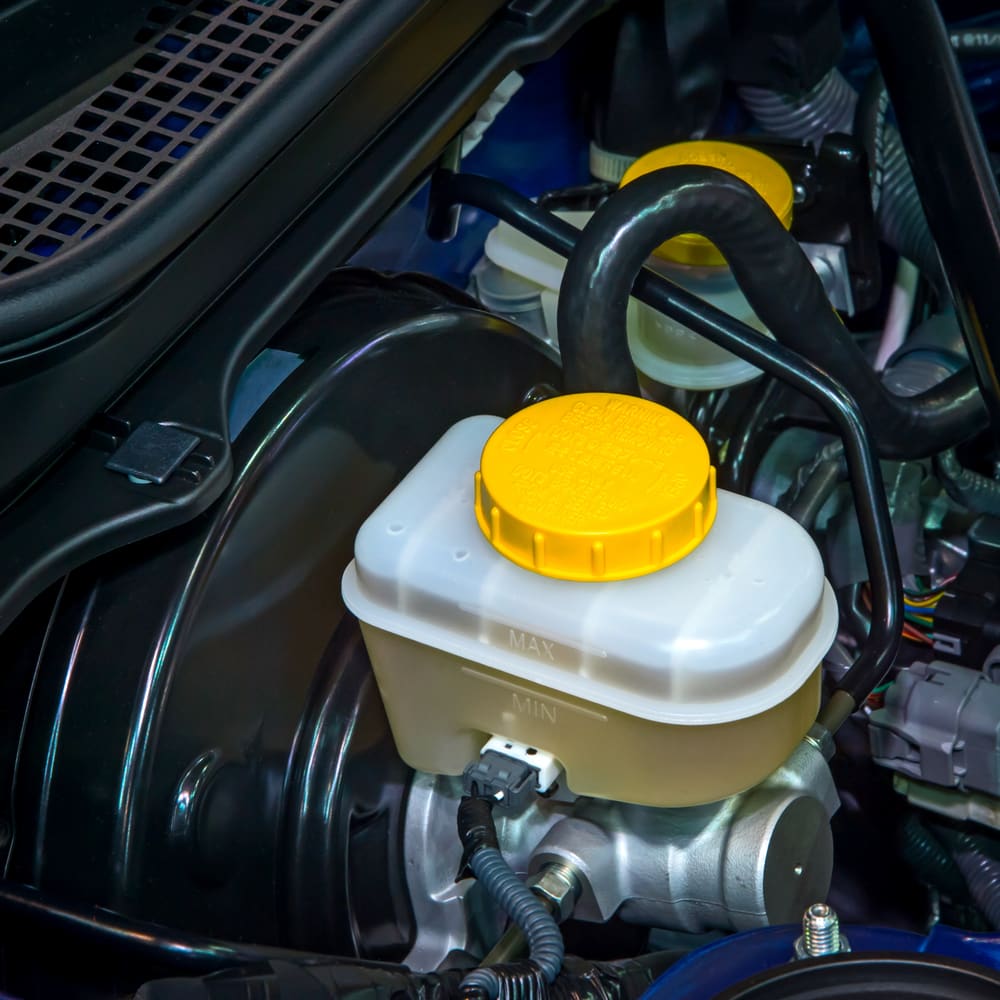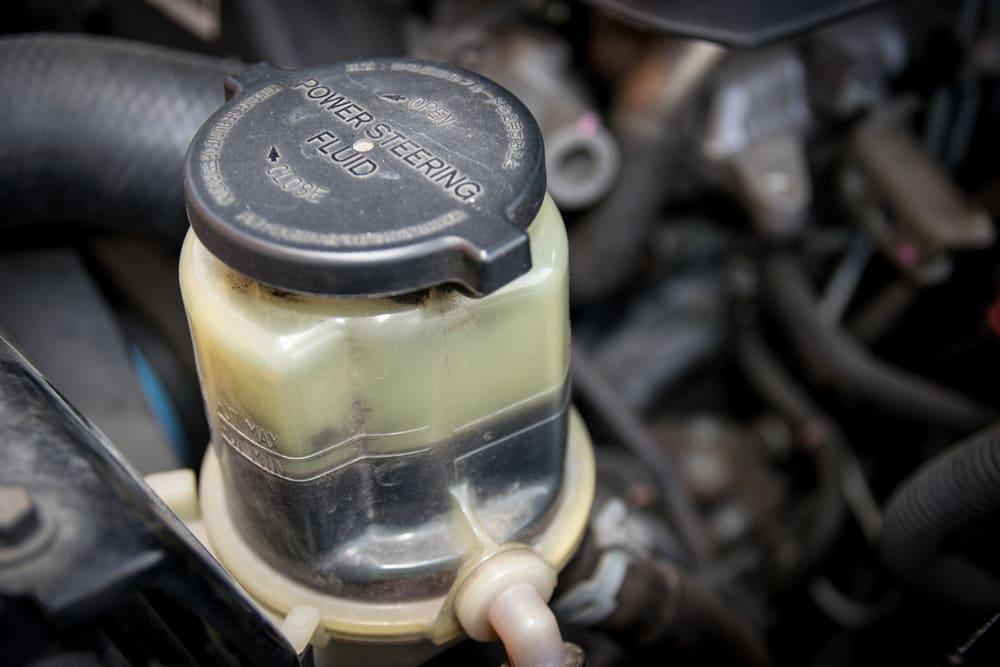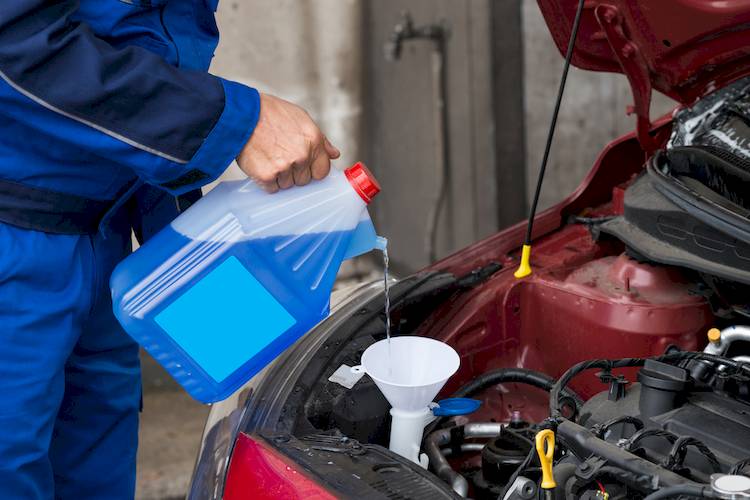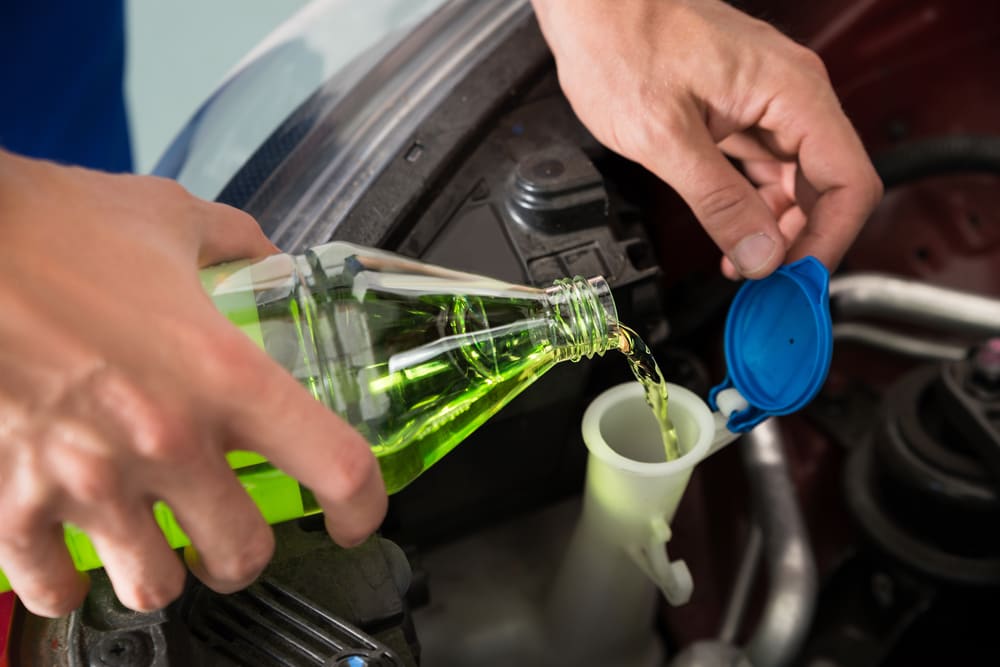

One of the easiest and most important things you can do for the longevity of your vehicle is to ensure that the fluids are kept at the proper level and in good condition. Performing the scheduled maintenance services addresses the condition of the fluids, but it’s also important that the fluids remain at the correct level between these services.
Here’s a brief rundown of the five most important fluids found in most cars, and how to check the levels.
1. Engine oil
Description: All internal combustion engines require engine oil to lubricate the many moving internal parts. Without oil, these parts would overheat and could completely seize.
Precautions: Motor oil is a potential carcinogen, so please be sure to wear gloves if you have them, and wash your hands thoroughly after handling motor oil.
Risks associated with low fluid levels: Letting the oil get below the minimum level of the operating range can have detrimental effects on engine performance, including the possibility of complete engine failure.
How to check the level: Most vehicles have an oil dipstick, with maximum and minimum marks, for checking the oil level. Pull the dipstick all the way out and wipe the bottom clean with a dry rag. Then re-insert the dipstick completely, and remove it again, this time keeping it held upright or flat so the oil doesn’t run up the dipstick causing an inaccurate reading. Where the dipstick is now covered in oil is where the level is; ideally somewhere between the maximum and minimum marks.
2. Engine coolant
Description: Heat is a normal byproduct of the internal combustion engine. Engine coolant absorbs this heat and dissipates it through the radiator, allowing the engine to remain at a designated operating temperature.
Precautions: The engine coolant can be quite hot and under a lot of pressure. This can make opening the system very dangerous. If you do have to open the system, please be careful to only do so on a cold engine, and do it very slowly, or you risk getting seriously burned.
Risks associated with low fluid levels: A low coolant level can lead to engine overheating, which can cause severe damage.
How to check the level: The best way to check your coolant is after the car has been sitting for several hours, usually before starting after sitting overnight. Some vehicles allow you to check the level simply by looking through a translucent coolant expansion or overflow tank, and verifying that the level is between the minimum and maximum marks. Others require that you open the radiator or pressurized expansion tank (commonly found in German cars) to check the level.
3. Brake fluid
Description: When you depress your brake pedal, the master cylinder (which is attached to the brake pedal) moves brake fluid through the brake lines and into the brake calipers or wheel cylinders where it is used to apply the brakes.
Precautions: Brake fluid is hygroscopic, meaning it absorbs moisture in the surrounding environment. Keep all brake fluid containers and reservoirs tightly sealed until you need to add fluid, then immediately seal them up again after adding the fluid. Brake fluid is also extremely damaging to paint, so if you spill any, be sure to thoroughly wash the area with soap and water right away.
Risks associated with low fluid levels: If the brake fluid is allowed to get too low, you could experience a loss of brake pressure, or even a complete brake failure.
How to check the level: Most modern vehicles use a translucent plastic reservoir that allows the fluid level to be checked without opening the system. As with the other fluids, you are simply viewing the fluid level through the reservoir; ensure that the fluid level is between the minimum and maximum marks.
4. Power steering fluid
Description: Many manufacturers now equip vehicles with more efficient electric power steering systems, which reduce parasitic drag on the engine, resulting in better fuel economy. Despite this, there are still plenty of vehicles using older hydraulic power steering systems. These systems use pressurized power steering fluid to assist you in turning the steering wheel.
Precautions: Power steering fluid varies between manufacturers, and some are potential carcinogens. Just to be safe, I suggest wearing gloves and thoroughly wash your hands after handling the fluid.
Risks associated with low fluid levels: Low fluid levels can cause a loss of steering assist or a total failure of the power steering system, which could result in an accident.
How to check the level: Many power steering reservoir caps have a dipstick built into them, or they use a translucent reservoir that allows you to view the fluid level from the outside. The process is similar to checking engine oil: Remove the dipstick, wipe it clean, and then re-insert and remove it again. The level should be between the minimum and maximum marks. If it's the type with the translucent reservoir, just look through it to ensure that the fluid level is between the marks.
5. Windshield washer fluid
Description: Windshield washer fluid does exactly what the name implies–– it washes the windshield of your car.
Precautions: Washer fluid is pretty innocuous, though depending on the alcohol and detergent content, it is a potential skin irritant. If you get some on your skin, you can simply wash it off with soap and water.
Risks associated with low fluid levels: The only risk of having low washer fluid is that you may run out of fluid and be unable to clean your windshield when you need to, potentially limiting your visibility while driving.
How to check the level: The nice thing here is that you don’t actually need to check the level. Most vehicles don’t even have a way to check the level. Instead, if you run out or you believe the fluid is getting low, you can just fill the reservoir all the way back up to the top any time you want –– there’s no risk of overfilling it. Some vehicles have a built in level sensor to warn you when the level is low.
A friendly disclaimer
This list is not all-inclusive, nor is it vehicle-specific. It's a general guide to the most important fluids in the majority of cars on the road. If you’re having trouble locating any of the fluids listed above, your vehicle owner’s manual will usually have a diagram specific to your model.
All of these checks should be performed when the vehicle is stationary, on a level surface, and with the engine off. If any of the fluids are found to be low, it is strongly suggested that you top them off with the correct fluid (e.g., the correct weight of oil, not just any oil you have lying around) and have the vehicle inspected by a certified mechanic, such as one from YourMechanic, to diagnose why the fluid level was low.


